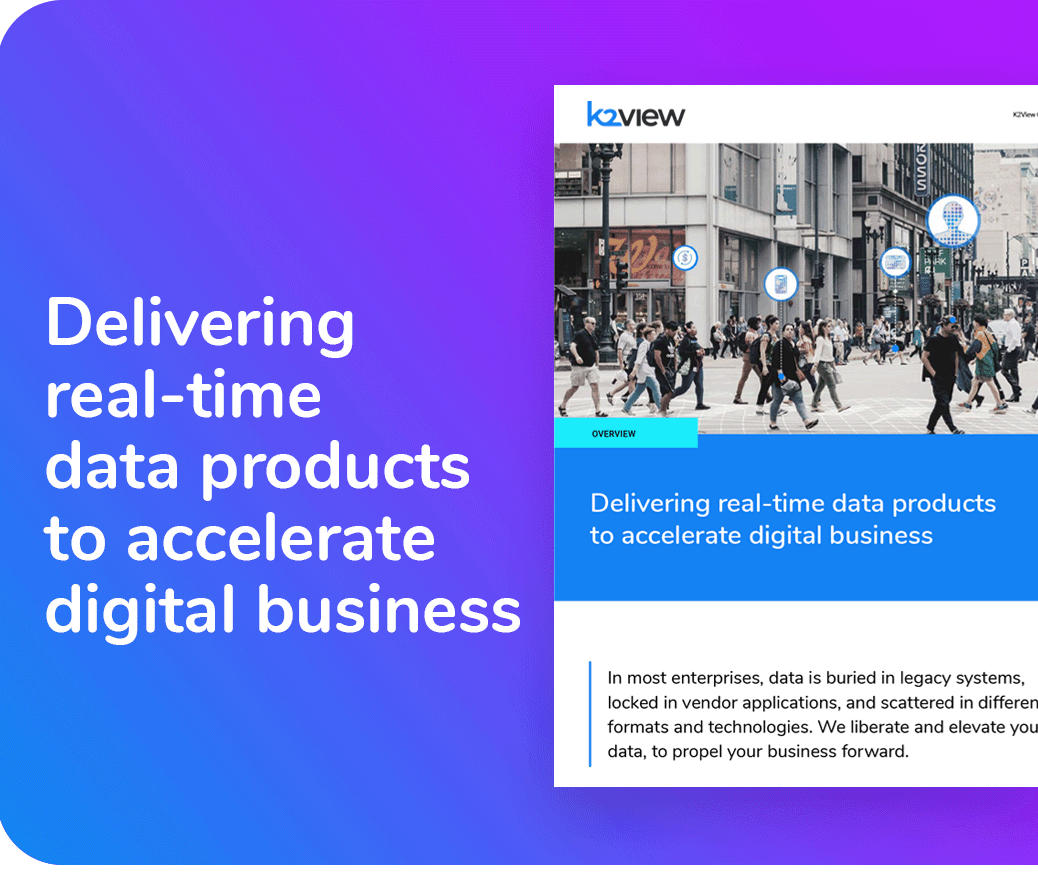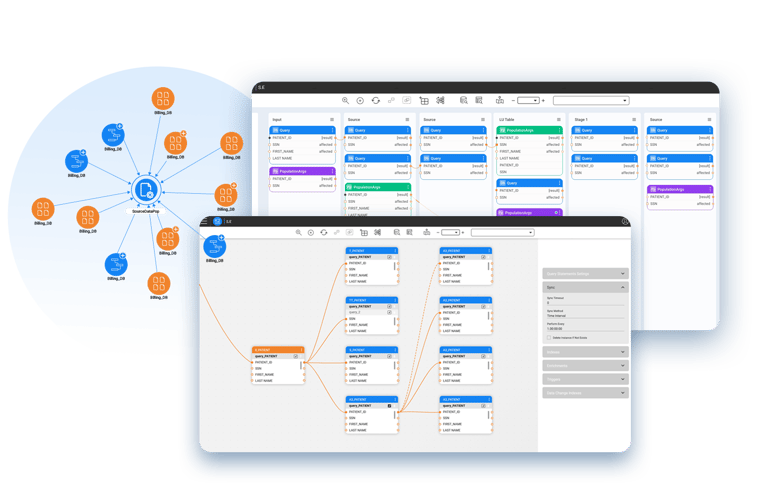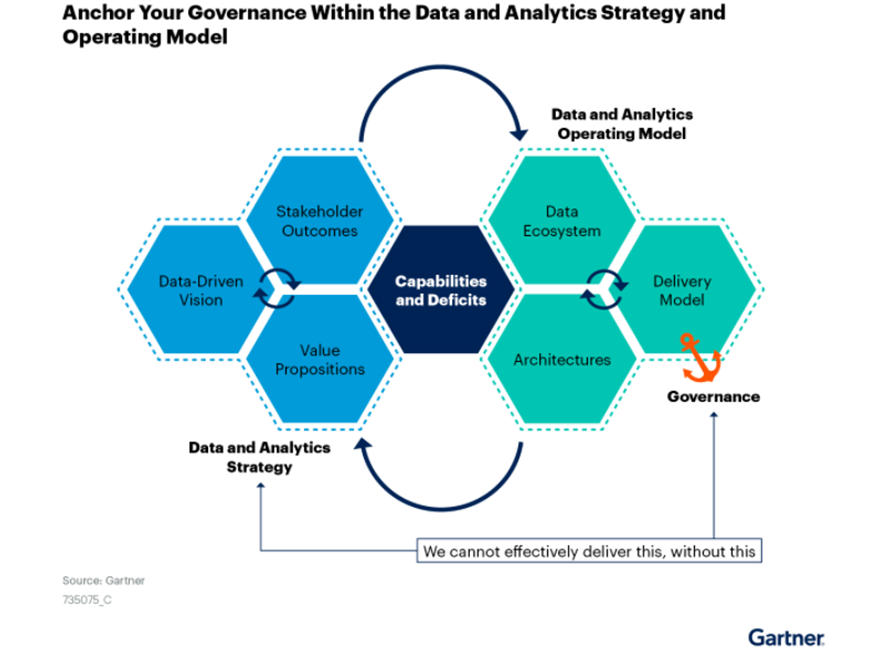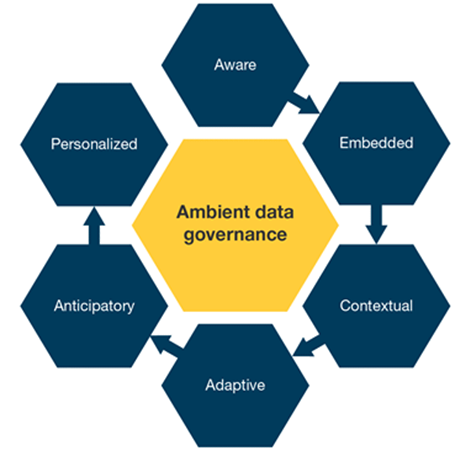A data product is a reusable data asset, engineered to deliver a trusted dataset, for a specific purpose. It integrates data from relevant source systems, processes the data, ensures that it’s compliant, and makes it instantly accessible to anyone with the right credentials.
A data product generally corresponds to one or more business entities (customers, suppliers, devices, orders, etc.) and is made up of metadata and dataset instances. It uniquely manages each dataset instance in its own hyper-performance Micro-Database™, to achieve enterprise-grade scale, resilience, and agility.
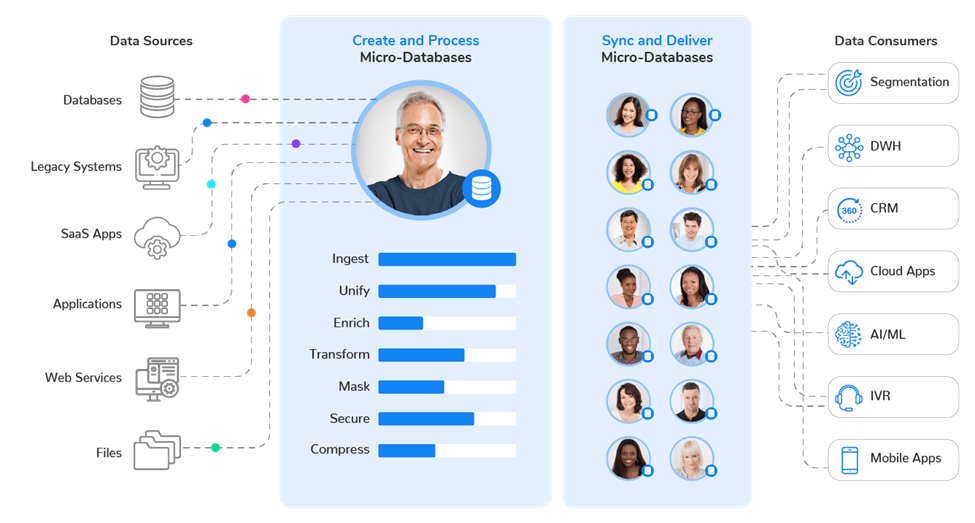
Collaboration based on a common language
Governing data by data products creates a common business language, providing the basis for collaboration between data and business teams. It focuses the discussion on the business by "rising above the noise" created by the underlying source systems, their technologies, and data formats.
Dynamic data catalog
Using data products to catalog data, creates an inventory of data assets that is always up to date. It also provides dynamic data lineage, mapping data flows from source to target. An active metadata layer delivers real-time performance and usage information. Full visibility into when, how and how often data is used, makes it easier to secure, protect, and scale data delivery.
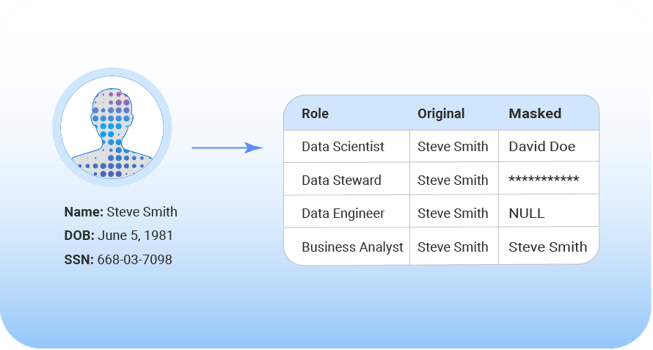
Metadata enrichment
The data product schema can be enriched with metadata that adds meaning and value to the specific business entity’s data. For example, metadata can be used to create multi-layer data classifications, add data lifecycle information, define consent parameters, and more. It can also be used to add active metadata information about usage of the data by consuming applications and users. This provides a direct connection from the data governance policies and regulations to the data.
Real-time policy enforcement
A single, complete source of a business entity data and metadata – coupled with centralized business rules – provides effective real-time data governance that can keep up with the pace and scale of your digital business. Based on your data classifications and rules, you can prevent access, or mask, the data, as needed, and secure and deliver it in an instant.
Data lifecycle management
From data ingestion, access, and delivery to end-of-life management, data products provide the context and means to simplify data management, while complying with privacy laws, industry regulations, and user preferences. For example, a customer Micro-Database can readily address consent-based data collection and processing. It can also provide the semantic context for balancing data storage limitations, and a solution for the need to save financial information for 7 years.
Existing data governance expansion
A data product approach is ideal for integrating with, and enhancing, the capabilities of enterprise data and analytics investments. It can be used to:
- Add real-time data governance for scaling digital business
- Create an agile and efficient framework for protecting an individual’s private data
- Bridge data silos for valuable business cases, and more
Let’s take a specific use case to showcase how data products provide an effective, business-focused approach to data governance.
Example: Preventing churn
It's broadly accepted that the cost of acquiring a new customer is 5x higher than retaining existing customers. That’s why reducing churn is a strategic business objective for many companies. The first step towards achieving this goal is to understand the factors that contribute to churn, and identify the customer behavior that indicates this intention.
Modeling the customer data product
You may assume that modeling the customer data product is a data function, but a good place to start would be with the business. The customer data product unifies fragmented customer data from different IT systems and environments. Depending on the business goal, you could collect all enterprise customer data, or focus on the relevant sources for a specific use-case, and perhaps expand the scope over time. Deciding on the right approach brings together the business owners, IT, and data governance teams into a discussion concerning the type of customer information that may impact the business goal.
In the case of customer churn, evaluating the data sources related to the top reasons why customers leave, is a good place to begin. Here are the top 3:
- Bad customer service
- What interactions did the customer have across all channels?
- How did the customer experience network/system fail?
- Insufficient value delivered
- What products and services did the customer purchase?
- What is the customer's order and payment history?
- Poor customer engagement
What campaigns, emails and other forms of communication did the customer receive?
Relevant data can also be found elsewhere, outside the enterprise. Dissatisfied or disgruntled customers often resort to social media, mostly because it’s so much quicker to tweet, or post, than writing an email, filling out a form letter, or calling a support number. This means that a customer’s social media feeds may contain churn indicators that should be connected to the customer entity.
Embedding privacy protection
Before the data can be used for any purpose, you want to make sure that sensitive and personally identifying information (PII) is protected as required by privacy laws. By governing business entities, you can embed the data privacy protection.
Working with the customer entity schema, identify and classify the sensitive information with the help of legal and privacy experts. This classification information is added as a metadata enrichment layer that correlates to data items like names, location, IP addresses, health records and more, that need to be protected.
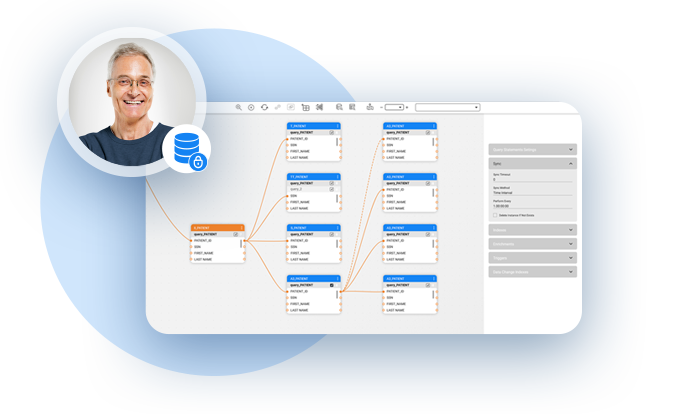
Having sensitive data classified in a Micro-Database, makes it easier to protect personal information without slowing down data operations.
Going back to our customer churn example, the churn prediction model requires the business intelligence team to run deep machine learning on a subset of the customer population.
Since the data is already organized into Micro-Databases that contain all relevant data about each customer, the heavy lifting required to create a complete trusted dataset has already been done. With the help of the classification layer, fields that need to be protected are anonymized before the dataset is delivered to the analytics team. In this way, compliant datasets can be provisioned for analytics in minutes.
Personalization and trust
Providing a personalized customer experience and personal privacy protection apply to every customer. Combining them into a single Micro-Database, makes it easier to deliver on both.
This is also a good time to discuss customer consents and preferences, and their impact on marketing.
It’s important to point out that not all privacy laws are created equal. GDPR, for example, requires informed consent (“opt-in”) before any personal data is collected, whereas CCPA does not. With all the new data protection laws being enacted in the US and around the globe, it’s hard to know how this consent issue will play out.
To sustain compliance, data governance will need to continuously answer the question, “Can we collect personal information?” for every individual customer. With a data product approach, this question can be answered with a straightforward algorithm that applies geography-based rules to the residence and consent preferences. Since the unified consent permissions in the customer Micro-Database are always up to date, any changes the customer makes can be automatically and immediately honored.
For example, under GDPR, you can collect personal information if you have a lawful basis for processing, such as:
- Necessary for business, in the case of a customer name
- Required by law, regarding financial information
- Informed consent, in the case of targeting cookies
By combining this classification with individual consent information, you can ensure legitimate data collection. In addition, any changes to individual consents and preferences are saved in the customer Micro-Database, serving as proof of compliance for audit purposes.
This approach enables you to comply with regulatory requirements, and build trust, by responding quickly to customer requests.
Ready for digital
Once your business intelligence team identifies the causes and likelihood of churn, and create a model for it, it’s time to bring the marketing team into the picture. Since the customer Micro-Database contains everything the company knows about the specific customer, the marketing team can take a data-driven approach to the problem. Its job is to prevent a customer from leaving at the crucial moment of intent. Churn prevention tools include personalized promotions and compensations that are tailored to the customers’ preferences.
Now, when a user logs in to the self-service portal, real-time analytics are performed on the customer’s data against the churn model. If the customer has just spent over 10 minutes holding the line for customer support before abandoning the call – a high propensity to churn is likely.
Marketing analytics now spring into action to generate the next best action. The solution may include a sincere apology, an explanation of the long waiting time, and preference-based compensation – all in real time.
Real-time data governance delivers trusted data, instantly
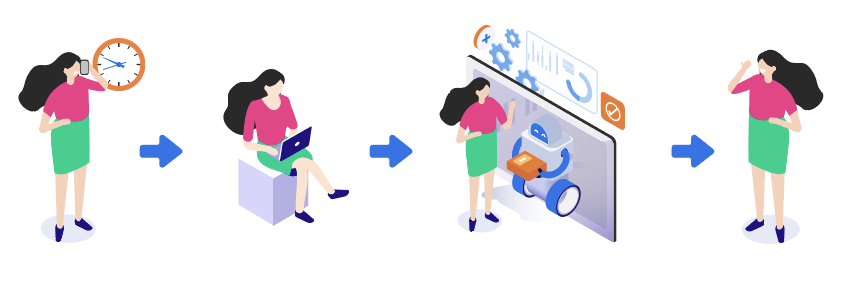
Sally waits 10 minutes
for support, and gives up. |
She logs onto the
self-service portal. |
Identified as “churn risk” by real-time analytics, Sally instantly receives a retention offer… |
...and gladly accepts it.
|

